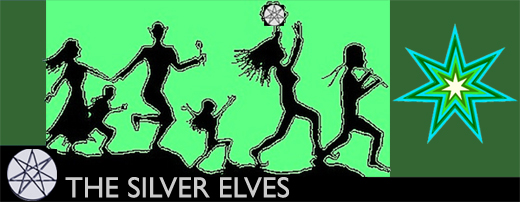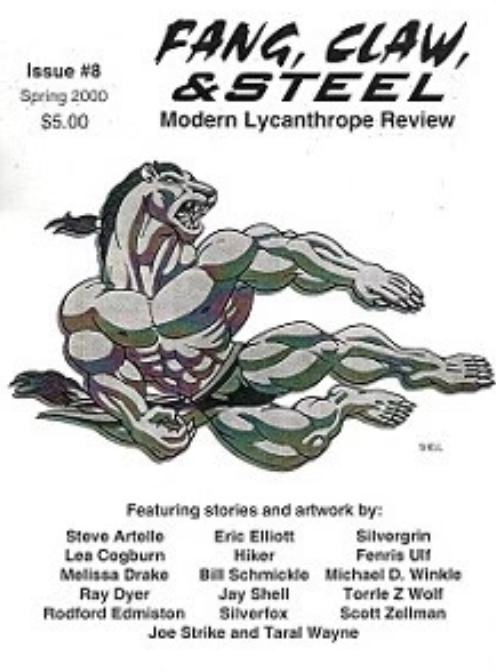A Brief Recent History of Therians & Otherkin
11/1/2023
While therians are by no means the same thing as furries, it is hard to deny that there is an overlap among the communities. The difference lies in each group's relation to the animalistic figures that they are centered around. The FurScience team explains this difference as such: "Therians often define themselves as people who identify as a non-human animal, a definition which is distinct from that of furries, whose interest in anthropomorphic media does not necessitate identification with non-human animals."
This explanation serves as an introduction to a study that the FurScience team performed at Anthrocon in 2016. The study was done to measure the strength of identification with animals (non-human animals, that is) in both furry and therian circles, and the difference between that strength. The study found that therians tend to identify much more strongly with animals and are more likely to consider themselves less than 100% human than non-therian furries are (these groups are, of course, not mutually exclusive).
Given this distinction in identity and communal structure, it makes sense that therians have their own history separate from that of the furry fandom. The therian community is generally considered to have its roots in the elfkin (also known as elfkind or elfinkind) community, which arose primarily in the 1970s. It was composed of close-knit groups that called themselves elves and often created their own languages and ways of dressing. The most well-known example of such a group is the Silver Elves, who came about in 1975; they are seemingly still active, or at least extant (their website was last updated in 2020).

In 1990, an elf known as R'ykanadar Korra'ti started a publication called Elfkind Digest with the help of the blossoming Internet and its various UseNet groups (alt.pagan being among the first to receive notification of the list). Its contributors were the first to coin the terms "otherkin" and "otherkind", both in 1990 (Arethinn aTinderel, 2021); the community was experiencing unprecedented growth and diversification, and it was becoming inconvenient to say "elf/dragon/orc/etc-kin" and the like (University of Cambridge, 2016).
Meanwhile, the term "therian" in relation to non-human-identifying individuals developed from the term "therianthrope", as a more general variant of "lycanthrope" (meaning a werewolf) that included non-canine species. One of the primary vehicles for this development was a UseNet group in the 1990s, alt.horror.werewolves. It began in late 1992 as a place to discuss werewolves in horror media, but by the following year it was picked up by individuals who called themselves werewolves and did not consider themselves fully human (Timothy Grivell, Helen Clegg & Elizabeth C. Roxburgh, 2014). A culture developed in which each person would introduce themselves with something called a "werecard", a series of personal facts that conveyed the person's hobbies, interests, and relationship to werewolfism/the therian lifestyle. The first werecard was posted to alt.horror.werewolves in September 1994.
Within a few months, they had grown so common that a user by the name of Wolfshadow set out to create a zine containing the werecards of the group's most active members. It was allegedly published the winter of the same year, 1994, according to a 1999 post on the group by user Bryan 'SMASH' Manternach. This is representative of the active zine culture within the group; members would advertise their publications, generally related to werewolves and horror, with regular posts. Examples of the obscure titles mentioned in these posts include Neon Gargoyle Gazette, Alt.Shift, Fang, Claw, & Steel, and ɫDread.

Though the newsgroup became significantly less active as the 21st century dawned, its influence persisted — the majority of therians being canine-aligned to this day (Grivell, 2014) — and the online otherkin community remained alive and well. As the 2010s approached, many of these groups migrated to the blogging platform Tumblr, according to Pedro Feijó, a history and philosophy researcher who decided to delve into the topic of "people who are more, or other, than human" (Cambridge, 2016).
(A quick note before I list sources: here are a couple of cool old therian resource websites that I didn't have time to write about!)
Pathways, an Angelfire site that was made as a list of resources for weres and therians.
(Accessed through the Internet Archive.)Sources:
"Why be human when you can be otherkin?" University of Cambridge, 7/16/2016. Online article.
"7.2 Animal Identification." FurScience, 2016. Online article.
"The Elfinkind Digest." Last updated 1/20/2018. Website.
"Elves In Paradise: The Enchanted Realm of the Silver Elves." The Silver Elves. Website.
Arethinn aTinderel. "A Brief History of the Word "Otherkind"." Mythsong.net. Last updated 9/6/2021. Online article.
Timothy Grivell, Helen Clegg, and Elizabeth C. Roxburgh. "An Interpretative Phenomenological Analysis of Identity in the Therian Community." Identity: An International Journal of Theory and Research, 5/13/2014. Journal article.
Jakkal."Foundation's Edge: The History of the Online Werecommunity." WereNet, 1999. Accessed through the Internet Archive. Website.
alt.horror.werewolves posts referenced in this article:
The first werecard posted in the group (from what I can find)
Creator of the Werecard Zine requesting submissions
Alleged publication date of the Werecard Zine
A post advertising the Neon Gargoyle Gazette